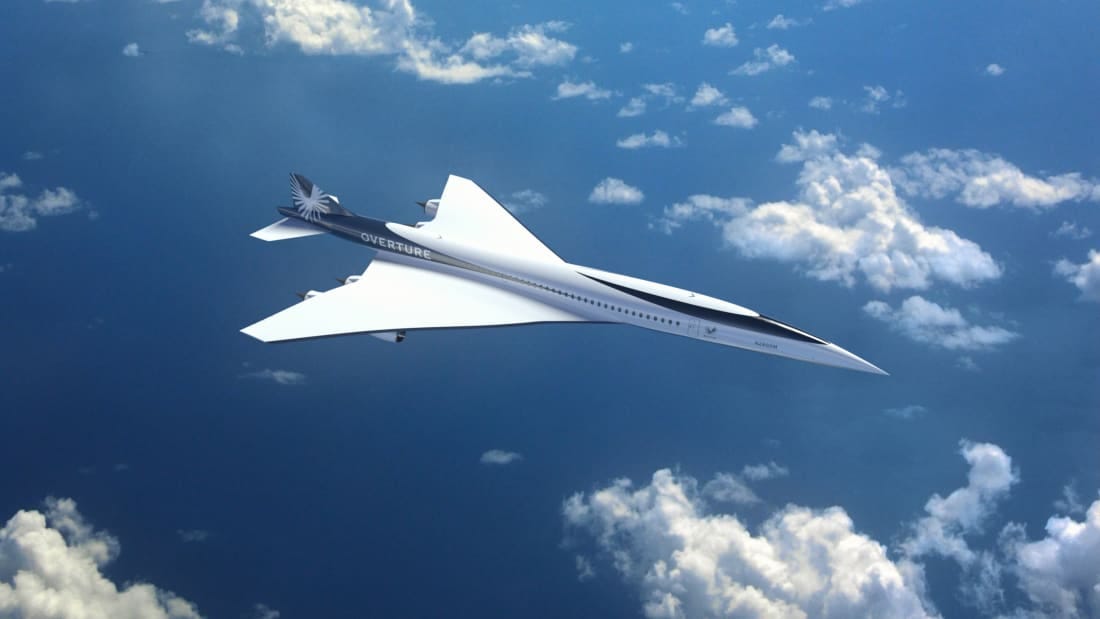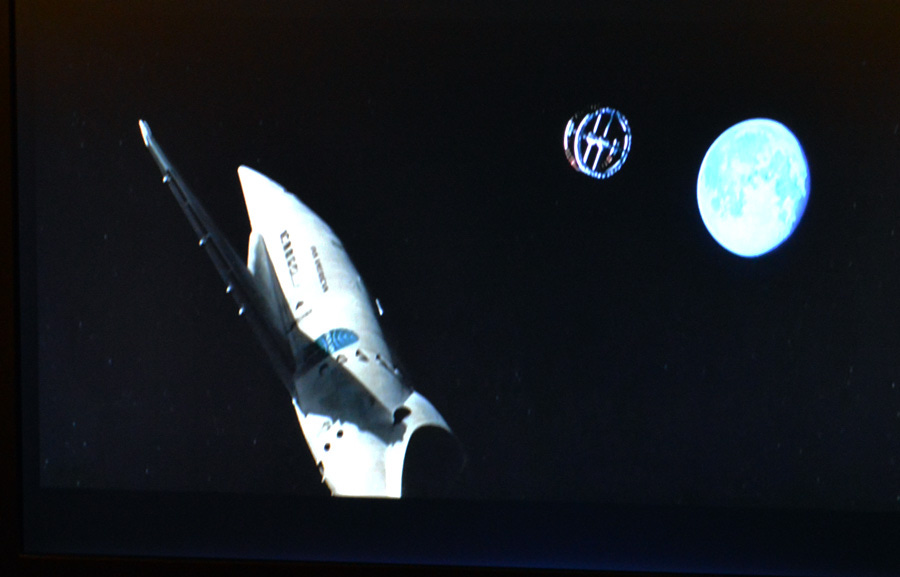✈ The coming boom in supersonic passenger flight. Finally. We hope.
Perhaps technological progress can finally overcome regulatory resistance
Item: Colorado-based start up Boom Supersonic is taking some major leaps forward in its quest to make supersonic flying a reality again. Nearly two years after rolling out its prototype supersonic demonstrator, the XB1, Boom has unveiled a major new design for its much anticipated Overture airliner, which will fly at twice the speed of today's subsonic commercial jets and is expected to carry its first passengers in 2029. Renderings of the aircraft, which has been in development for several years, were revealed this week during a press conference at the Farnborough Air Show, a UK-based aviation trade event. Not only does the updated design feature an extra engine, it also has a contoured fuselage and gull wings. The aircraft, scheduled go into production in 2024, will fly Mach 1.7 over water with a range of 4,250 nautical miles and have capacity for 65 to 80 passengers, say the team at Boom. - CNN, 07/22/2022
The NBA’s Oklahoma City Thunder has been a solid and steady performer since arriving in the Big Friendly — yes, apparently that’s a city nickname, along with Cinderella City — for the 2008-2009 season. The Thunder almost always wins more than it loses and almost always makes the playoffs. The team even made it to the NBA finals in 2012. But the Thunder’s biggest moment of glory was when it won the league championship in a different city under a different name, as the Seattle SuperSonics in 1979. That original incarnation of the franchise began in 1967, its name reflecting Seattle-based Boeing’s selection by the FAA to design and build a prototype supersonic transport, or SST. (I’m guessing “Thunder” is a play on sonic booms, which can sound like a thunderclap.)
The Up Wing, supersonic sixties, baby!
At the time, it probably seemed a pretty safe bet to name the team after an experimental aeronautical technology. This was 1960s future-optimist, Up Wing America, after all. The Apollo program was notching success after success and was less than two years from the Apollo 11 Moon landing. Commercial supersonic flight would surely be the next new frontier to be conquered.
President John F. Kennedy seems to have thought so. Similar to his “We choose to go to the Moon” speech at Rice University in 1962, President Kennedy also chose a collegiate setting to announce this national goal. Addressing the US Air Force Academy’s graduating class in June 1963, Kennedy said his administration “should immediately commence a new program in partnership with private industry to develop at the earliest practical date the prototype of a commercially successful supersonic transport superior to that being built in any other country of the world. … This commitment, I believe, is essential to a strong and forward-looking Nation, and indicates the future of the manned aircraft as we move into a missile age as well.”
Britain and France thought much the same thing, having in November 1962 announced a partnership to jointly build their own SST. For those two nations, building the Concorde would be their Apollo program. The Supersonic Race was on, with the Soviet Union soon joining to make it a three-team contest. By 1967, there were 74 orders from 16 different airlines for the joint Anglo-French project — the Apollo program for those two countries. The American thoroughbred in this context would be the Boeing 2707.
“The lead customer in line with fifteen orders,” notes Sam Howe Verhovek in the excellent Jet Age: The Comet, the 707, and the Race to Shrink the World, was Pan Am. Of course, it was. The airline was at its peak during the 1960s and widely known as an innovator. It led the US airline industry into the jet age with the first purchase of the Boeing 707. As I’ve previously written:
The (almost assuredly nuclear-powered) space plane arriving at the spinning space station at the beginning of 2001: A Space Odyssey — right after that epic flash-forward from an ancestral ape tossing a bone into the air — sports the iconic blue ball on its fuselage. For audiences of the day, the branding lent an air of verisimilitude to the scene. Of course, it would be a Pan Am vehicle taking passengers to orbit.
The emerging era of supersonic transport is a great example of how pro-progress economics, culture, and policy can function together to create something amazing. Yet while this Up Wing supersonic synergy was happening, anti-progress Down Wing forces were on the move.
There’s a storm coming
Anti-supersonic activists misused a 1964 FAA-commissioned test (also known as Operation Bongo II) over, ironically, Oklahoma City to make their case that sonic booms would be too loud and jarring to permit the airplanes to fly over land. For six months, eight times a day, the military would have jet fighter airplanes — not airliners specifically designed to reduce sonic booms by half — go supersonic over the city. So eight times a day for six months, residents would hear loud sonic booms and experience rattling windows.
Now even though an FAA-commissioned survey found 75 percent of people saying they could tolerate as many as eight sonic booms a day, there were unsurprisingly thousands of complaints. And while the Air Force investigated these complaints and dismissed most as spurious, the study formed the basis of the successful campaign against supersonic flight in the US. In addition to noise concerns, environmentalists made a variety of arguments suggesting the airplanes would ruin the ozone layer. Naming budgetary and environmental concerns, the House and Senate both voted to cancel funding for the SST program in May 1971. In 1973, just four years after the British-French Concorde started flying, the FAA banned supersonic flight over the continental United States. Around the same time, the global oil shock and volatile economic situation led all those potential Concorde purchaser airlines — with the exception of British Airways and Air France — to cancel their orders.
And that was it. For nearly 50 years, there’s been no supersonic airline industry here. We’ve wasted decades when we could have been researching and improving that technology — making it faster, safer, more affordable — while also competing with the Concorde.
Keep reading with a 7-day free trial
Subscribe to Faster, Please! to keep reading this post and get 7 days of free access to the full post archives.





